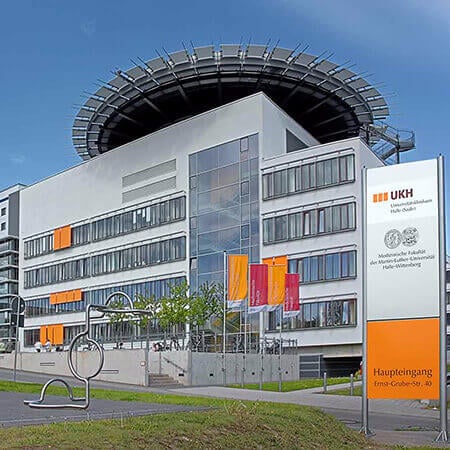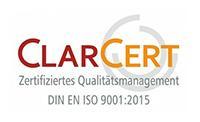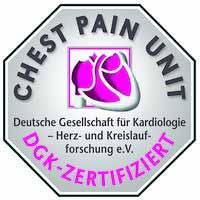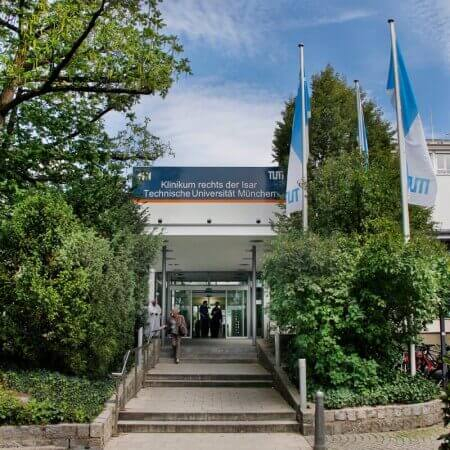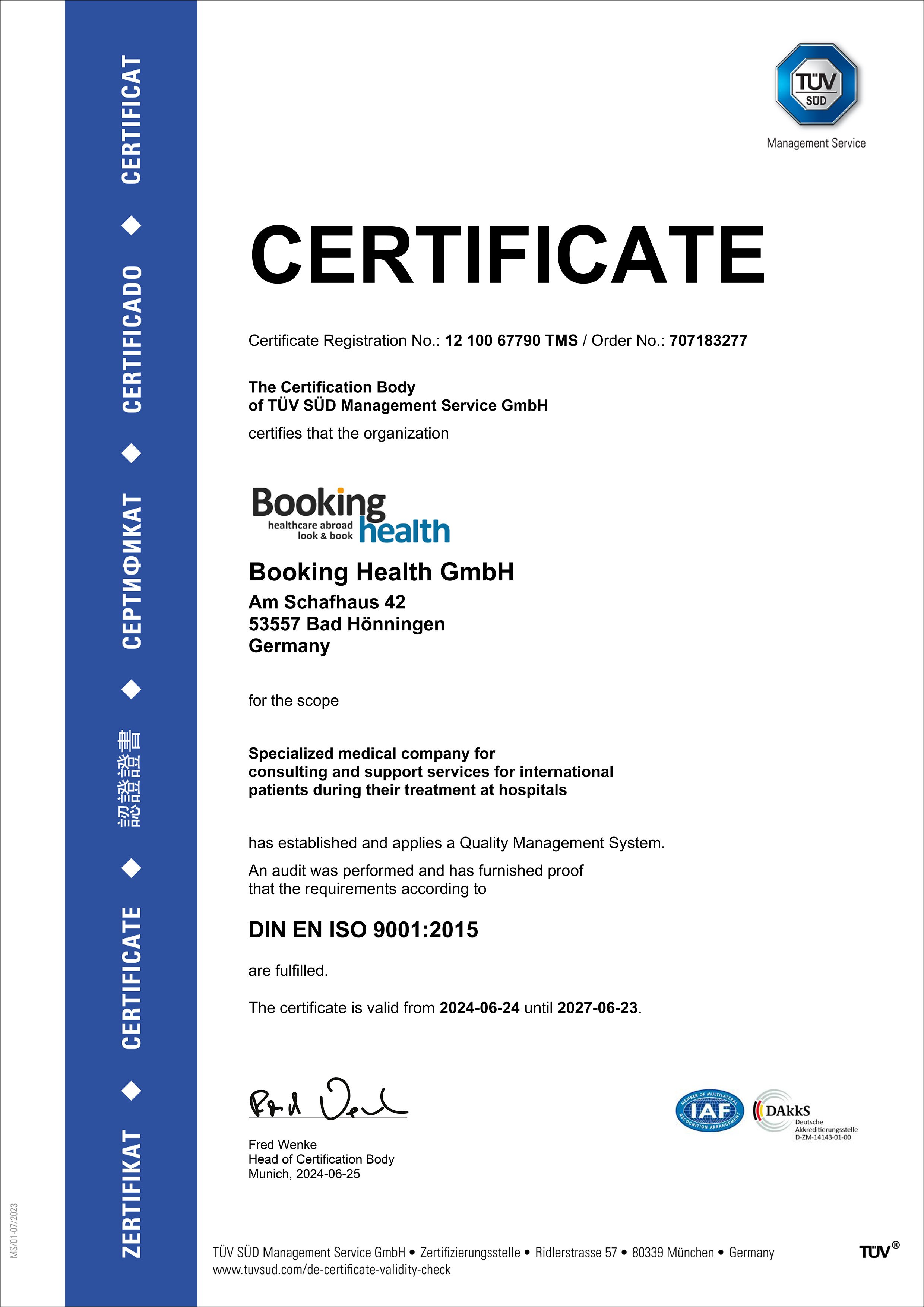One of the significant tasks of cardiology is early detection and treatment of patients with a high risk of sudden cardiac death. One of the most dangerous heart diseases with the risk of arrhythmogenic cardiac death is long QT syndrome, in which the risk of sudden cardiac death development reaches 71%. According to the cardiology prospective studies, 57% of cases of sudden cardiac death occur before the age of 20.
Content
- Long QT syndrome overview
- Types of long QT syndrome
- Causes of long QT syndrome
- Clinical diagnosis of long QT syndrome
- Symptoms of long QT syndrome
- Long QT syndrome treatment in Germany
- The cost of treatment in Germany
Long QT syndrome overview
Long QT syndrome is a congenital electrical heart disease characterized by prolongation of the QT interval on resting ECG (electrocardiography), with episodes of fainting, development of polymorphic ventricular tachycardia, or ventricular fibrillation. At present, the long QT syndrome is referred to as the frequent rhythm disturbance.
Long QT syndrome was first described in the middle of the last century in Norway in a family whereof six deaf-and-dumb children who had fainting episodes, four died suddenly. The doctors carefully conducted a study at autopsy, but found no structural or organic lesions of the heart. However, in the lifetime electrocardiograms taken in all children, they noted a pronounced prolongation of the QT interval in the ECG.
The QT interval is a special part of the electrocardiogram. It is responsible for the stability of the electrical field of the heart. Both its lengthening and extreme shortening can lead to dangerous fluctuation in heart rhythm. Regardless of the cause of QT interval prolongation, there is a high risk of heart rhythm disturbances and sudden death in all cases.
The heart muscle in general is regulated by periodically changing flows of ions or electrolytes of sodium, potassium, calcium through these channels, which are in the cellular level of the heart muscle. Accordingly, the disturbance of the configurations of movements of these currents forms the movement of all the variety of changes on the ECG, and the overall clinical picture of the disease. Further research in cardiology has shown that the functions of these channels are genetically programmed. To date, 12 molecular genetic variants of long QT syndrome have been discovered and they differ not only in molecular genetics, but also in the different courses of the disease, prognosis, and treatment, and this is very important because the issue is always individual in the symptomatology in patients with impaired QT interval, from favorable types, which do not need treatment, to malignant ones, requiring lifelong therapy or surgical intervention. All variants of long QT syndrome are characterized by fainting, loss of consciousness, and cardiac arrest.
Fainting occurs more often during physical and emotional exertion (not always while swimming), and even simply entering the water can provoke fainting. In some types of syndrome, the provocateur of the attack may be a sharp sound. The most malignant and rare forms of pathology are characterized by fainting, which may occur at rest, at night, or during sleep.
Currently, mutations that explain the mechanism of congenital long QT syndrome are identified in 75% of clinically confirmed cases. Mutations in 10 genes encoding potassium channels are responsible for the development of this syndrome. The 2 most studied pathogenetic mechanisms of heart rhythm disorders occurring in long QT syndrome are known:
- Imbalance of sympathetic innervation: reduced right sympathetic innervation due to weakness or underdevelopment of the right stellate ganglion.
- Mechanism of "intracardiac disturbances".
Types of long QT syndrome
In addition to congenital forms of long QT syndrome, there are many causes for QT interval prolongation in cardiology due to taking medicines, the use of a variety of diets, anorexia or bulimia, in which the habitual vomiting causes dysmetabolic changes in the myocardium, electrolyte balance disorders, leading to the QT interval prolongation, etc.
There is a type of long qt syndrome, where the QT interval may shorten due to therapy and treatment. In all other congenital cases, it is permanently long. There are other variants of long QT syndrome such as Timothy syndrome, which is found in children early in life and if not diagnosed, causes death before they are 30 years old. It is characterized by syndactyly and autism. Patients with Andersen syndrome are characterized by several specific and clinical signs: oblique chin, low ears, as well as hypo- or hyperkalemic paralysis (twitching of certain muscle groups, small twitching of facial muscles). These pathological conditions will precede a fainting state.
It should be noted that there are very many secondary forms of long QT syndrome. Women have a slightly longer QT interval than men, and they are also more likely to have QT interval prolongation and development of cardiac arrest when they take the medicines. And this is a big problem because not all the drugs that lengthen the QT interval or create changes are yet known. And many of these drugs are not cardiac drugs. When prescribing them, the doctors at cardiology departments must understand what other side effects that may arise. Often these are psychotropic drugs – medicines prescribed for depression in children. With the intake of these medicines, cases of sudden death are possible. Therefore, if you have a suspicion or are diagnosed with long QT syndrome, separate drugs in the background therapy, antifungals, antibiotics, also known as erythromycin, and others, must be taken by the prescription of your cardiologist.
Causes of long QT syndrome
Impaired repolarization and post-depolarization of the ventricular myocardium, resulting in prolongation of QT interval develops under the influence of certain factors. The most common form of long OT syndrome in young individuals is a combination of this syndrome with mitral valve prolapse. Magnesium deficiency is one of the main causes of QT interval prolongation in these patients. According to cardiology research data, the relationship between the depth of prolapse and/or presence of structural changes in the valves and increase in QT interval variability has been revealed.
The QT interval prolongation develops in acute myocardial ischemia and myocardial infarction. The combination of acute ischemia with ventricular rhythm disturbances for 4-5 days increases the risk of sudden death by 6 times. The pathogenesis of QT interval prolongation in this condition is associated with electrolyte disturbances: in 90% of patients, there is magnesium deficiency, as well as increased sympathetic system activity, which explains the high effectiveness of beta blockers in acute myocardial infarction.
The cause of long QT syndrome is also diffuse myocardial lesions (postinfarction cardiosclerosis, cardiomyopathies, myocarditis, or pericarditis). The QT interval prolongation is also observed in people with arterial and ventricular block, sinus bradycardia, or chronic cerebrovascular insufficiency.
A direct correlation between heart rhythm disturbances and QT dispersion in patients with type1 and 2 diabetes has been established.
There have been described cases of occurrence of ventricular tachycardia due to a prolonged QT interval with a fatal outcome in women on a low-protein diet to reduce body weight. The QT interval may be prolonged when using therapeutic doses of several drugs.
Clinical diagnosis of long QT syndrome
The clinical diagnosis of congenital long QT syndrome is based on the features divided into:
- Prolongation of the QT interval (QT>0.44 s).
- History of episodes of fainting.
- Presence of long QT syndrome in family members.
- Congenital sensorineural deafness.
- Alternate T wave (ECG feature).
- Slow heart rate (in children).
- Pathological ventricular repolarization.
At the stage of identifying patients with lqts, a comprehensive assessment of risk factors in all family members with cases of sudden death, syncopal states, attacks of ventricular rhythm disturbances is important. At the analysis of factors provoking syncope, it has been established that in 38% of cases the episode was registered due strong emotional excitation, in 48% of cases the provoking factor was physical activity, in 22% – swimming, in 16% – awakening after a night sleep, in 5% of cases it was a reaction on an acoustic stimulus. Thus, physical activity and emotional tension are provoking factors in long QT syndrome.
The frequency of detection of prolonged QT interval in cardiology in school-age children with congenital sensorineural hearing loss on standard ECG reaches 44%; almost half of them (43%) had episodes of fainting and tachycardia paroxysms. In young individuals with mitral and/or tricuspid valve prolapse, the frequency of detection of the long QT interval reaches 33%.
ECG plays an important role in the diagnosis of congenital long QT syndrome, which allows to establish or assume the presence of this syndrome in 80% of cases. In the absence of marked sinus arrhythmia, it is recommended to assess the QT interval in sinus rhythm with stable heart rate.
It is caused by studying electrophysiological aspects of the syndrome, revealing predictors of life-threatening arrhythmias, the introduction of molecular-genetic examination, and the accumulation of experience in the treatment of this syndrome.
Symptoms of long QT syndrome
The manifestations of long QT syndrome are quite diverse. In the more severe clinical types, patients have deafness, frequent fainting, dizziness, weakness. In addition, epileptic-like seizures are recorded in some cases of this condition, which often leads to misdiagnosis and wrong treatment. According to cardiology research, 10 to 25% of patients with long QT syndrome receive improper treatment, and they develop sudden cardiac or infant death. The onset of tachyarrhythmias and syncope depends on external influences: for example, in certain types of syndrome, symptoms can occur because of exercise, while in other types of pathology, fainting and ventricular fibrillation can occur due to sudden and loud sounds.
A milder form of prolonged QT syndrome (Romano-Ward type) is characterized by transient syncopal states (fainting) and rare attacks of tachyarrhythmia, but there is no hearing loss. In some cases, this form of the disease does not manifest itself at all, except for electrocardiographic data, and is an incidental finding during a medical examination. Nevertheless, even with this type of long QT syndrome, the risk of sudden cardiac death due to ventricular fibrillation is many times higher than in a healthy person. Therefore, this type of pathology also requires both careful diagnostic examination and treatment.
Long QT syndrome treatment in Germany
The therapy of the long QT syndrome is quite complicated. Many specialists recommend some schemes and reject others, but there is no single treatment protocol for this pathology. Beta-adrenoceptor antagonists are universal medications, which reduce the risk of tachyarrhythmias and fibrillations, as well as decrease sympathetic effects on the myocardium, but they are ineffective for certain types of long QT syndrome. In the case of type 3 long QT syndrome, it is more reasonable to use antiarrhythmic drugs of class B1. These features of the treatment of the disease increase the need for molecular genetic diagnosis to determine the type of pathology. In cases of frequent tachyarrhythmia attacks and a high risk of fibrillation, implantation of a pacemaker or cardioverter-defibrillator is recommended.
The treatment in Germany in all variants of long QT syndrome in a critical or acute case, in case of a seizure, bruising, fainting, or cardiac arrest is artificial heart massage and electric defibrillation.
All patients need to follow the recommended treatment regimen, explaining the need to take medications in a timely manner. Unfortunately, there are cases when children grow up and take beta blockers for a long time, start to feel good, and think they are healthy. And as they begin to worry about the effects of beta blockers on conditions such as poor sleep, low blood pressure, and heart rate, they often self-cancel medicine, which often leads to the sudden death of the patient.
The most important thing is to take the prescribed drugs in time. Patients are recommended to try to modify their lifestyle accordingly. For example, with the variant, where the child faints at the sound, it is recommended to change the entire sound system at home to a light system, alarm clock, doorbell, and, if possible, to protect him from sudden sharp sound stimuli. This is not always possible, but it can be done to some extent. In patients with other types of long QT syndrome, physical activity is strictly forbidden. If with appropriate treatment, fainting still continues, then it is necessary to implant a cardioverter-defibrillator.
Accordingly, if ventricular fibrillation develops, an electric shock is applied, which stops this fibrillation. But still, the therapy with beta blockers should continue. Then the defibrillator will be triggered less often and less frequently. Well, and if this does not help, the next options of treatment will be surgery, for example, removal of the left stellate ganglion in the neck responsible for the asynchronous activity of the right and left ventricles, which is seen as one of the mechanisms of development of long QT syndrome.
The cost of treatment in Germany
Prices for treatment in German hospitals, contrary to what is commonly thought, are quite democratic. The unified system, which is at the core of German price formation, makes the cost of treatment in cardiology departments at German hospitals relatively inexpensive and includes many services such as long-term hospitalization in case of need, rehabilitation, and much more. This is precisely the reason why German hospitals are becoming increasingly popular among overseas patients, as the cost of treatment is justified by its quality and efficiency, as well as the range of services included.
- The prices for conservative therapy for long QT syndrome start at 494 EUR.
- The cost of treatment in Germany with cardioverter-defibrillator implantation starts at 10,709 EUR.
It is easy to find out the average cost of treatment in Germany. Simply send Booking Health a request using the request form on the website.
Booking Health will help you to get the most comprehensive information on the treatment costs, after helping you to choose among German hospitals. For each patient, an individual program of diagnostics and treatment as well as stay, taking into account the health condition and personal wishes, is prepared by Booking Health.
Authors:
This article was edited by medical experts, board-certified doctors Dr. Nadezhda Ivanisova, and Dr. Bohdan Mykhalniuk. For the treatment of the conditions referred to in the article, you must consult a doctor; the information in the article is not intended for self-medication!
Our editorial policy, which details our commitment to accuracy and transparency, is available here. Click this link to review our policies.



